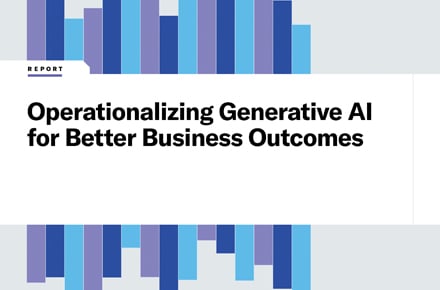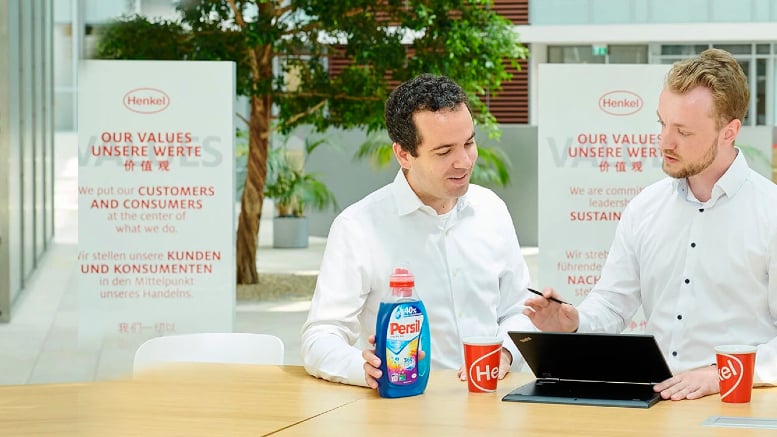Skalieren Sie Ihre Applications mit einem Factory-Ansatz
Juni 12, 2025 / Manju Naglapur
Kurzfristig? Die wichtigsten Erkenntnisse lesen:
- Die industrielle Revolution führte Fabriken ein, die die Produktivität in der Fertigung drastisch verbesserten.
- Ein Applications-Factory-Ansatz wendet ähnliche Konzepte bei der Applications-Entwicklung und -Verwaltung an.
- Zu den Vorteilen dieses Ansatzes gehören eine erhöhte Skalierbarkeit, Sicherheit und Konsistenz sowie ein verbessertes Kundenerlebnis.
- Zu den Schlüsselkomponenten gehören Shared Services, globale Best Practices und robuste Lösungen.
Mit der industriellen Revolution konnten Fabriken die Produktivität in der Fertigung drastisch steigern. Mitten in der digitalen Revolution kann ein Factory-Ansatz bei der Applications Development eine ähnliche Beschleunigung auslösen.
Maschinen eröffneten neue Möglichkeiten für die Herstellung von Waren. In physischen Fabriken bewegen sich Produkte von Maschine zu Maschine, die jeweils für eine Aufgabe verantwortlich sind, wie z. B. Mischen, Kochen, Kühlen und Verpacken in einer Lebensmittelproduktionsanlage. Ebenso unterteilt ein Applications-Factory-Ansatz die App-Erstellung in wiederholbare Einzelaktionen, die die Produktion beschleunigen und das Management rationalisieren.
Dieser Ansatz zielt darauf ab, Kunden- und Mitarbeiteranforderungen durch eine einheitliche und standardisierte Vereinfachung der Applications-Erstellung zu erfüllen. Es vereint Lösungen, Prozesse, Tools und Mitarbeiter, damit Ihr Unternehmen neue Applications effizient bereitstellen kann.
Diese Methode der Applications Modernization priorisiert den einmaligen Aufbau und die wiederholte Bereitstellung wiederverwendbarer Komponenten, Shared Services, globaler Best Practices, Prozesse, Transformationsmodernisierungstechniken und sicherheitsorientierter Bausteine. Wenn Sie beispielsweise ein sicheres Anmeldemodul entwickelt und getestet haben, können Sie es in jeder neuen Anwendung wiederverwenden, ohne es von Grund auf neu zu erstellen. Dieser Ansatz bietet Ihrem Unternehmen mehrere überzeugende Vorteile.
Skalierbarkeit und andere Applications-Vorteile
Eine Applications Factory bietet ähnliche Vorteile wie die Fertigung. Schneller und konsistenter produzieren Sie Ihr Produkt – in diesem Fall Applications. Diese Methode funktioniert im großen Maßstab, da Sie Anwendungen nur einmal erstellen und diese Blaupause für zukünftige App-Bereitstellungen iterieren. Betrachten Sie es als Entwicklung eines bewährten Blueprints – sobald er erstellt ist, kann er immer wieder angewendet werden, um die Lieferung zu beschleunigen, Kosteneinsparungen zu erzielen und die Konsistenz aufrechtzuerhalten. Dies beschleunigt die Markteinführungszeit und gewährleistet eine konsistente Applications-Qualität, Sicherheit und Performance.
Diese Skalierbarkeit bedeutet, dass sich Ihre Systeme an sich ändernde Arbeitsbelastungen und Benutzeranforderungen sowie eine Zunahme von Daten, Benutzern und Datenverkehr anpassen können, ohne Kompromisse bei Zuverlässigkeit oder Geschwindigkeit einzugehen. Wenn sich die Verarbeitungsanforderungen ändern, passen skalierbare Systeme automatisch die Applications Performance und die Kosten an. Indem Sie die Kohärenz über Plattformen und Lösungen hinweg sicherstellen, vereinheitlichen Sie Ihre Ziele und richten Ihre funktionalen Experten und Ressourcen aus.
Während Skalierbarkeit ein erheblicher Vorteil ist, gehen die Vorteile eines Applications-Factory-Ansatzes über die Entwicklung hinaus. Die Zentralisierung der für die Bereitstellung von Anwendungen erforderlichen Funktionen erhöht die Applications Quality, Automatisierung und Geschwindigkeit.
- Verbessern Sie das Kundenerlebnis, indem Sie effektiver auf Kundenanforderungen reagieren.
- Beschleunigung der Applications-Entwicklung und -Bereitstellung.
- Reduzierung von Sicherheitslücken während der Entwicklung aufgrund der integrierten Sicherheitspraktiken der Applications Factory.
- Erleichtern Sie die Modernisierung von Applications und Prozessen.
- Stellen Sie die Konsistenz mit Ihren Praktiken und Komponenten im gesamten Unternehmen sicher.
- Steigern Sie Ihren Ruf und Ihre Präsenz in der Industrie, indem Sie die Fähigkeit zur effektiven Skalierung von Applications demonstrieren.
Diese Ergebnisse können Sie durch die Zentralisierung von Applications Management Services und Praktiken erzielen, aber zuerst müssen Sie die richtigen Komponenten implementieren.
Bestandteile einer erfolgreichen Applications Factory
Unternehmen streben nach einer effizienten Skalierung der Betriebsabläufe, was den Applications-Factory-Ansatz attraktiv macht. Teams setzen auf diese Methode, weil sie eine bessere Konsistenz, Flexibilität und abgestimmte Ressourcen unter einer übergeordneten Applications Management Struktur schafft.
Um Ihre eigene Fabrik zu bauen, beginnen Sie mit den Grundlagen. Genauso wie eine physische Fabrik mit Maschinen gefüllt ist, die jeweils einen einzigartigen Zweck erfüllen und zum gesamten Prozess und zur Schaffung eines Unternehmensprodukts beitragen. Sie ist auch auf Logistik und eine größere Anzahl von Prozessen angewiesen, um diese Waren an die Verbraucher zu bringen. Eine Applications Factory ist mit mehreren wiederverwendbaren Komponenten aufgebaut.
- Shared Services zur Förderung von Effizienz und Zusammenarbeit über Projekte hinweg
- Globale Best Practices für Prozesse, Transformationen, Modernisierungstechniken und Sicherheitsmaßnahmen
- Robuste Lösungen, optimierte Prozesse und effiziente Werkzeuge
- Ein globales Team aus kompetenten Mitarbeitern, die zusammenarbeiten, um Innovationen zu beschleunigen und die Lieferqualität zu verbessern
- Teams, die nach Fähigkeiten und Industries organisiert sind, um im großen Maßstab zu arbeiten
- Eine effektive Büroinfrastruktur, die zum Funktionieren der Applications Factory beiträgt
- Zentralisiertes Management von Lösungen, Prozessen und Tools, damit Sie effizienter auf Kundenanforderungen reagieren können
Integrieren Sie diese Komponenten, um eine robuste, effiziente Applications Factory zu etablieren, die Produktivität, Qualität und Reaktionsfähigkeit auf Marktanforderungen verbessert.
Optimieren Sie Ihren Applications-Ansatz
Ihre Business Applications verbinden Ihre Kunden und Mitarbeiter mit Dienstleistungen, ermöglichen es den Mitarbeitern, ihre Aufgaben zu verwalten und ermöglichen es Ihrem Unternehmen, Prozesse zu automatisieren. Mit einem Applications-Factory-Ansatz können Sie Ihre App-Entwicklung und -Verwaltung agil und sicher gestalten.
Erfahren Sie, wie Unisys Sie bei der Ausrichtung Ihrer Anwendungen an Ihren Geschäftszielen unterstützen kann, und erfahren Sie mehr über die Erfolgsgeschichte einer Emerson-Division bei der Modernisierung und Migration von Applications in die Cloud.




















